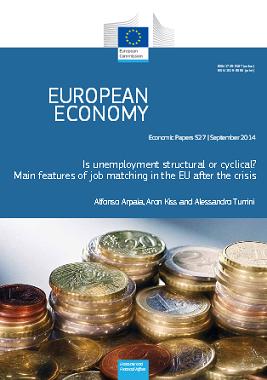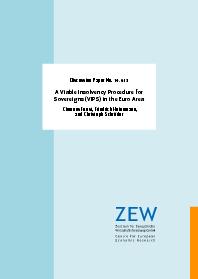Alvarez, F., Le Bihan, H. & Lippi, F. (2014) “Modelling sticky prices and the effect of monetary shocks“, VoxEU Organisation, 30 Σεπτεμβρίου. The assumption of sticky prices is central in understanding the effect of monetary policies on the economy. Yet, how to best model price stickiness is an unresolved issue. This column assesses a selection of models that are able to reproduce cross-sectional heterogeneity in the setting of prices. …Read More
Small business productivity and access to financing
Krishnan, K., Nandy, D. & Puri, M. (2014) “Small business productivity and access to financing“, VoxEU Organisation, 26 Σεπτεμβρίου. The greater access to capital could increase small firms’ investment efficiency. Others argue that it may result in wasteful expenditures. This column discusses how small firms were affected by the Interstate Banking and Branching Efficiency Act of 1994, which allowed interstate banking. The authors find an increase in the productivity …Read More
What macroeconomic policies for the Eurozone?
Giavazzi, F. & Tabellini, G. (2014) “What macroeconomic policies for the Eurozone?“, VoxEU Organisation, 25 Σεπτεμβρίου. In a recent column, the authors suggested coordinating monetary and fiscal expansions in the Eurozone through a money-financed temporary tax cut. The effectiveness of their proposal, however, has been questioned. In this column, the authors address some of the criticisms. They argue that the counter-cyclical fiscal policies adopted by the US and the …Read More
Is unemployment structural or cyclical? Main features of job matching in the EU after the crisis
Arpaia, Α., Kiss, A. & Turrini, A. (2014) “Is unemployment structural or cyclical? Main features of job matching in the EU after the crisis“, European Economy, European Commission Economic Papers 527, Σεπτέμβριος. The paper sheds light on developments in labour market matching in the EU after the crisis. First, it analyses the main features of the Beveridge curve and frictional unemployment in EU countries, with a view to isolate …Read More
Deep roots or current policies – what drives sustained prosperity differences across locations?
Delgado, M., Ketels, C., Porter, M. & Stern, S. (2014) “Deep roots or current policies – what drives sustained prosperity differences across locations?“, VoxEU Organisation, 18 Σεπτεμβρίου. There is a consensus among economists that ‘deep roots’ – geography, natural endowments, and institutions – are important determinants of prosperity differences across countries. This column argues that deep roots matter, but they are neither the whole story nor an excuse for …Read More
Entry and Exit in OTC Derivatives Markets
Atkeson, Α., Eisfeldt, Α. & Weill, P. O. (2014) “Entry and Exit in OTC Derivatives Markets“, VoxEU Organisation, 17 Σεπτεμβρίου. Entry and trading in over-the-counter (OTC) derivatives markets have received considerable attention. However, many critical questions remain unaddressed. This column describes a formal study of banks’ incentives to enter and trade in OTC derivatives markets. In equilibrium, only large banks enter to become dealers, and middle-sized banks only enter …Read More
A Viable Insolvency Procedure for Sovereigns (VIPS) in the Euro Area
Fuest, C., Heinemann, F. & Schröder, C. (2014) “A Viable Insolvency Procedure for Sovereigns (VIPS) in the Euro Area“, Centre for European Economic Research (ZEW), Discussion Paper No. 14, Αύγουστος. The euro area debt crisis has revealed serious flaws in the institutional setup of the European Monetary Union (EMU) as it had been designed in the late 1990s (Buti and Carnot, 2012; Hodson, 2013). Although the establishment of a …Read More
Why does Italy not grow? – The Italian economy has barely grown since it joined the euro area in 1999
Mody, Α. & Riley, Ε. (2014) “Why does Italy not grow? – The Italian economy has barely grown since it joined the euro area in 1999“, Bruegel Institute, 09 Σεπτεμβρίου. In April this year, the Italian debt-to-GDP ratio was expected to peak by year-end at 135 percent of GDP. That projection assumed a real GDP growth rate of 0.6 percent and inflation of about 0.7 percent. The projected decline …Read More
A ‘sovereign subsidy’ – zero risk weights and sovereign risk spillovers
Korte, J. & Steffen, S. (2014) “A ‘sovereign subsidy’ – zero risk weights and sovereign risk spillovers“, VoxEU Organisation, 07 Σεπτεμβρίου. European banking regulation assigns a risk weight of zero to sovereign debt issued by EU member countries, making it an attractive investment for European banks. This column defines a ‘sovereign subsidy’ as a new measure quantifying to what extent banks are undercapitalised due to the zero risk weights. …Read More
Fiscal Convergence in the European Union before the Crisis
Bertarelli, S., Censolo, R. & Colombo, C. (2014) “Fiscal Convergence in the European Union before the Crisis“, Contemporary Economic Policy, Volume 32, Issue 4, σσ. 784–801, Οκτώβριος 2014. This article investigates fiscal convergence attained by EU countries in the period 1991–2008, by employing β- and σ-convergence techniques complemented by a time series analysis. Overall our results highlight a distinctive convergence pattern in the European Union. Fiscal discipline leading to …Read More







